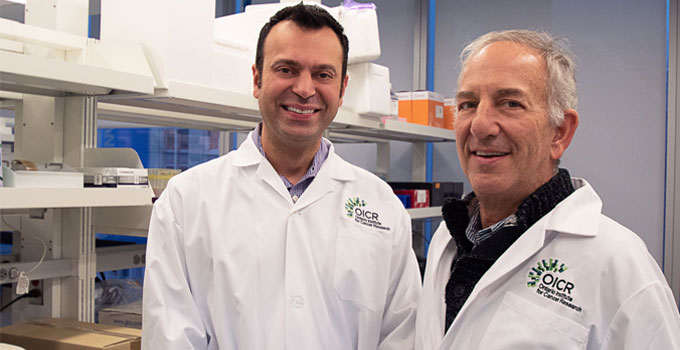Researchers identify five subtypes of pancreatic cancer, uncovering new opportunities for targeted treatment of the aggressive disease
Toronto – (January 13, 2020) Researchers at the Ontario Institute for Cancer Research (OICR) and the University Health Network (UHN) have discovered detailed new information about the subtypes of pancreatic cancer. A better understanding of the disease groups may lead to new treatment options and improved clinical outcomes for this lethal disease.
The study, published today in Nature Genetics, represents the most comprehensive analysis of the molecular subtypes of pancreatic cancer to date. Through detailed genomic and transcriptomic analyses, the research group identified five distinct subtypes of the disease (Basal-like-A, Basal-like-B, Classical-A, Classical-B, and Hybrid) with unique molecular properties that could be targeted with novel chemotherapies, biologics and immunotherapies.
“Therapy development for pancreatic cancer has been hindered by an incomplete knowledge of the molecular subtypes of this deadly disease,” says lead author Dr. Faiyaz Notta, Co-Leader of OICR’s Pancreatic Cancer Translational Research Initiative (PanCuRx) and Scientist at UHN’s Princess Margaret Cancer Centre. “By rigorously analyzing advanced pancreatic cancers – which is the stage of disease that most patients have when they’re diagnosed – we were able to create a framework. This will help us develop better predictive models of disease progression that can assist in personalizing treatment decisions and lead to new targeted therapies.”
The study is based on data from more than 300 patients with both early stage and advanced pancreatic cancer who participated in COMPASS, a first-of-its-kind clinical trial that is breaking new ground in discovery science and personalized pancreatic cancer treatment. COMPASS is enabled by advanced pathology laboratory techniques at UHN and OICR, and next generation sequencing at OICR.
“Most pancreatic cancer research is focused solely on early stage – or resectable – tumours, but in reality, pancreatic cancer is often found in patients after it has advanced and spread to other organs,” says Notta. “COMPASS allowed us to look into these advanced cancers while treating these patients, develop a better understanding of the biology behind metastatic pancreatic cancer, and shed light on the mechanisms driving disease progression.”
Interestingly, the Basal-like-A subtype, which had been difficult to observe before this study, was linked with a specific genetic abnormality. Most of the Basal-like-A tumours harboured several copies of a mutated KRAS gene, also known as a genetic amplification of mutant KRAS. The research group hypothesizes that some of the subtypes arise from specific genetic changes that occur as pancreatic cancer develops.
“This research opens new doors for therapeutic development,” says Dr. Steven Gallinger, Co-Leader of OICR’s PanCuRx, Surgical Oncologist at UHN and Senior Investigator, Lunenfeld Tanenbaum Research Institute at Mount Sinai Hospital. “We look forward to capitalizing on the promise of these discoveries, building on our understanding of pancreatic cancer subtypes, and bringing new treatments to patients with the disease.”
This research was supported by OICR through funding provided by the Government of Ontario, and by the Wallace McCain Centre for Pancreatic Cancer by the Princess Margaret Cancer Foundation, the Terry Fox Research Institute, the Canadian Cancer Society Research Institute, the Pancreatic Cancer Canada Foundation, the Canadian Friends of the Hebrew University and the Cancer Research Society (no. 23383).

